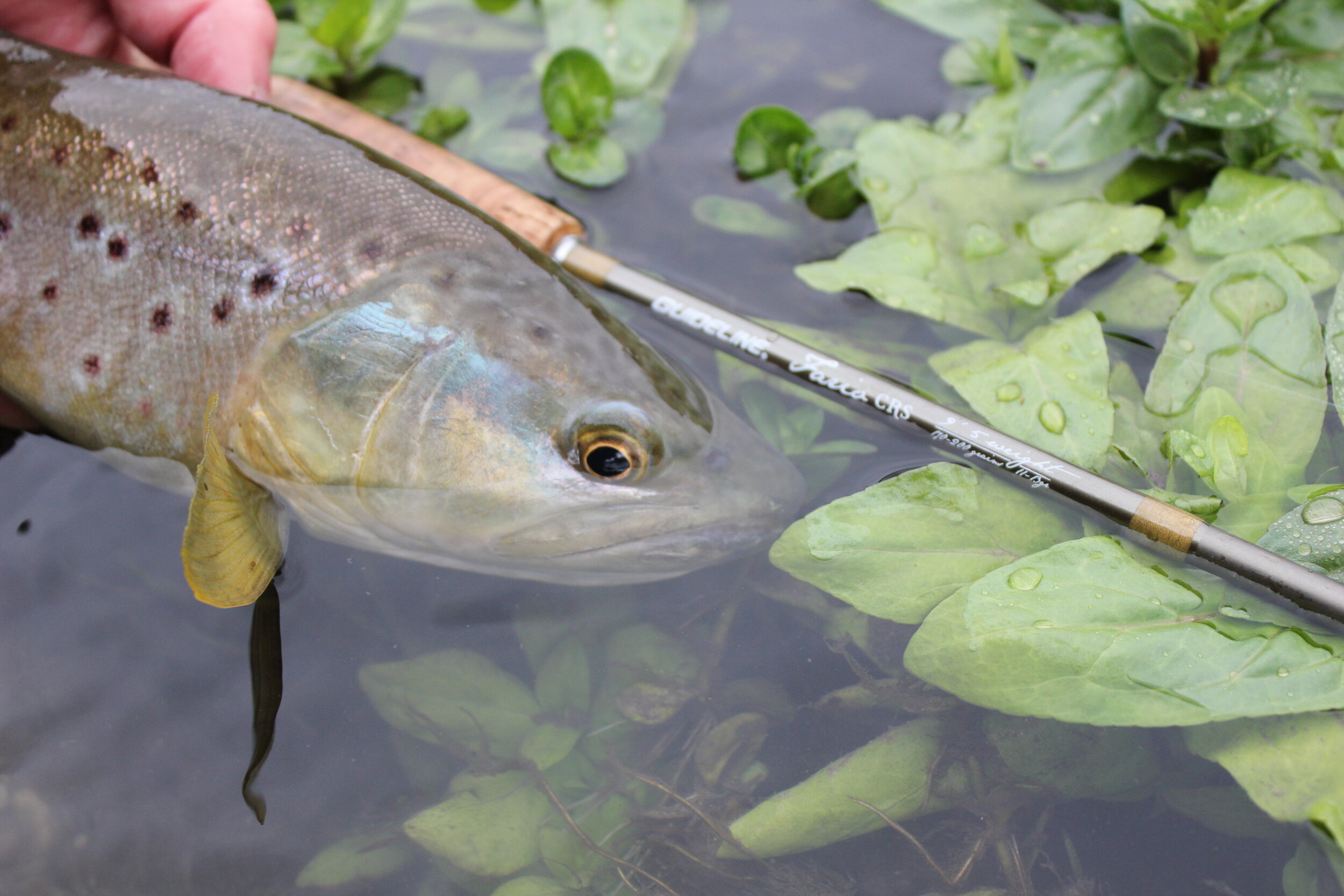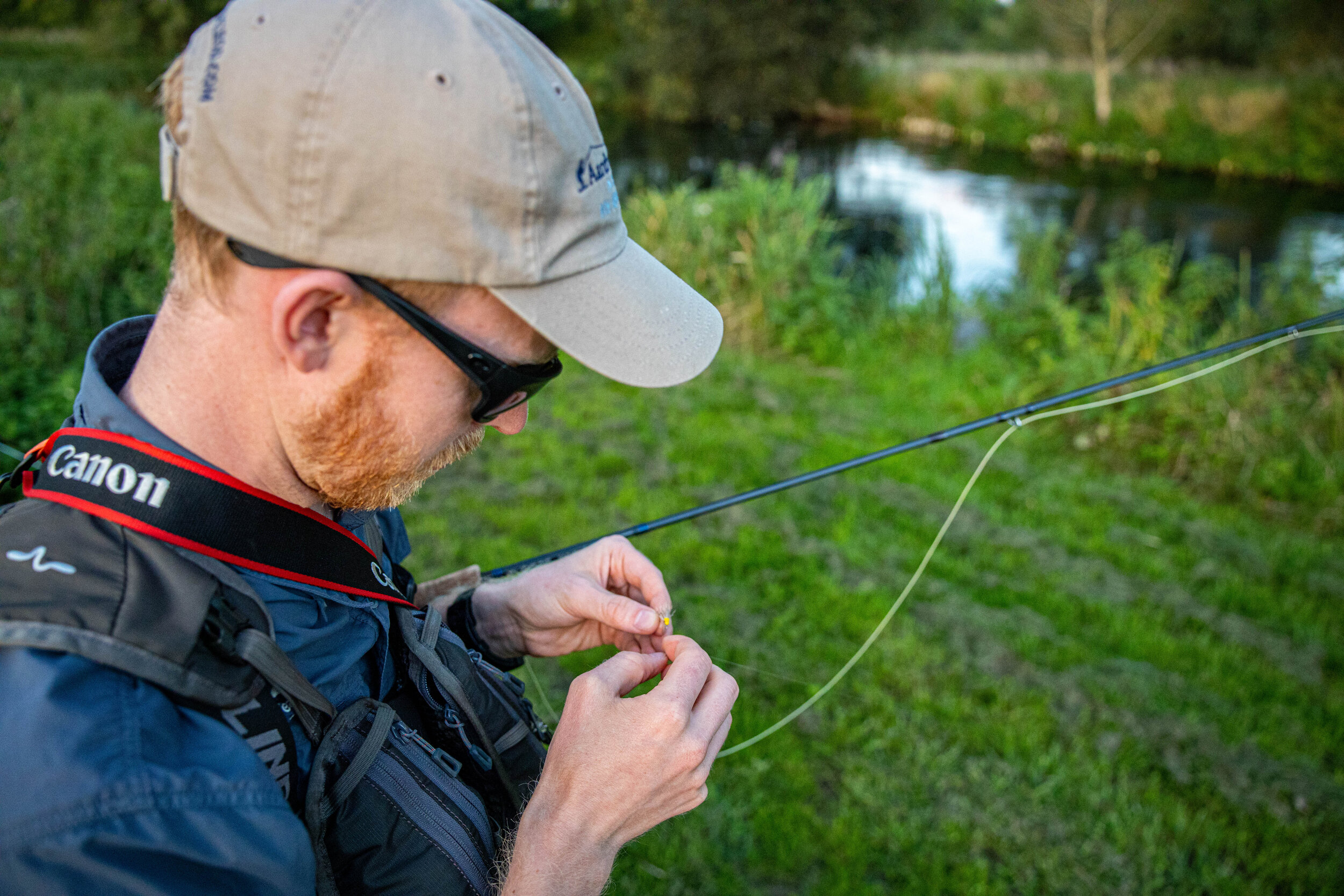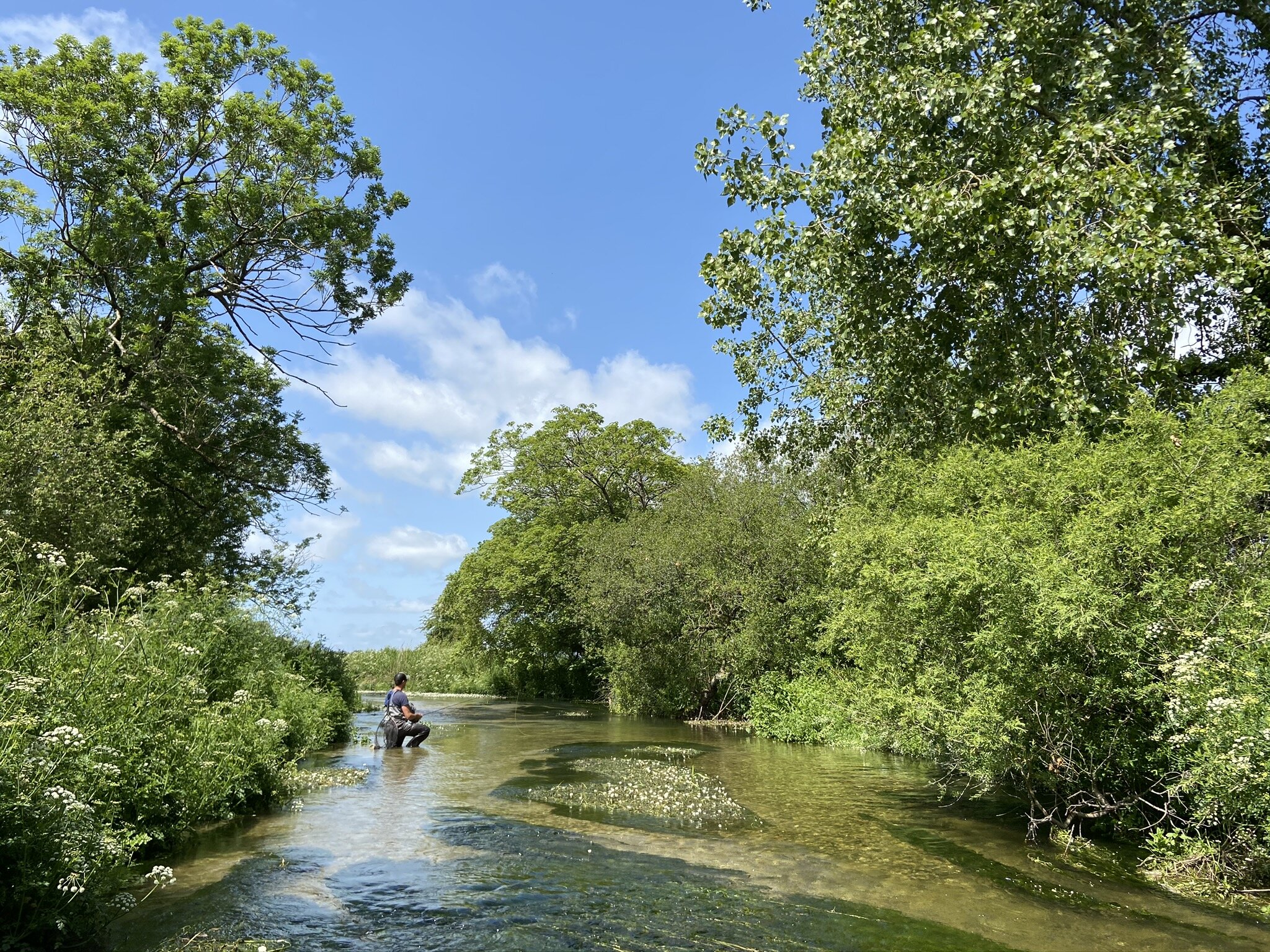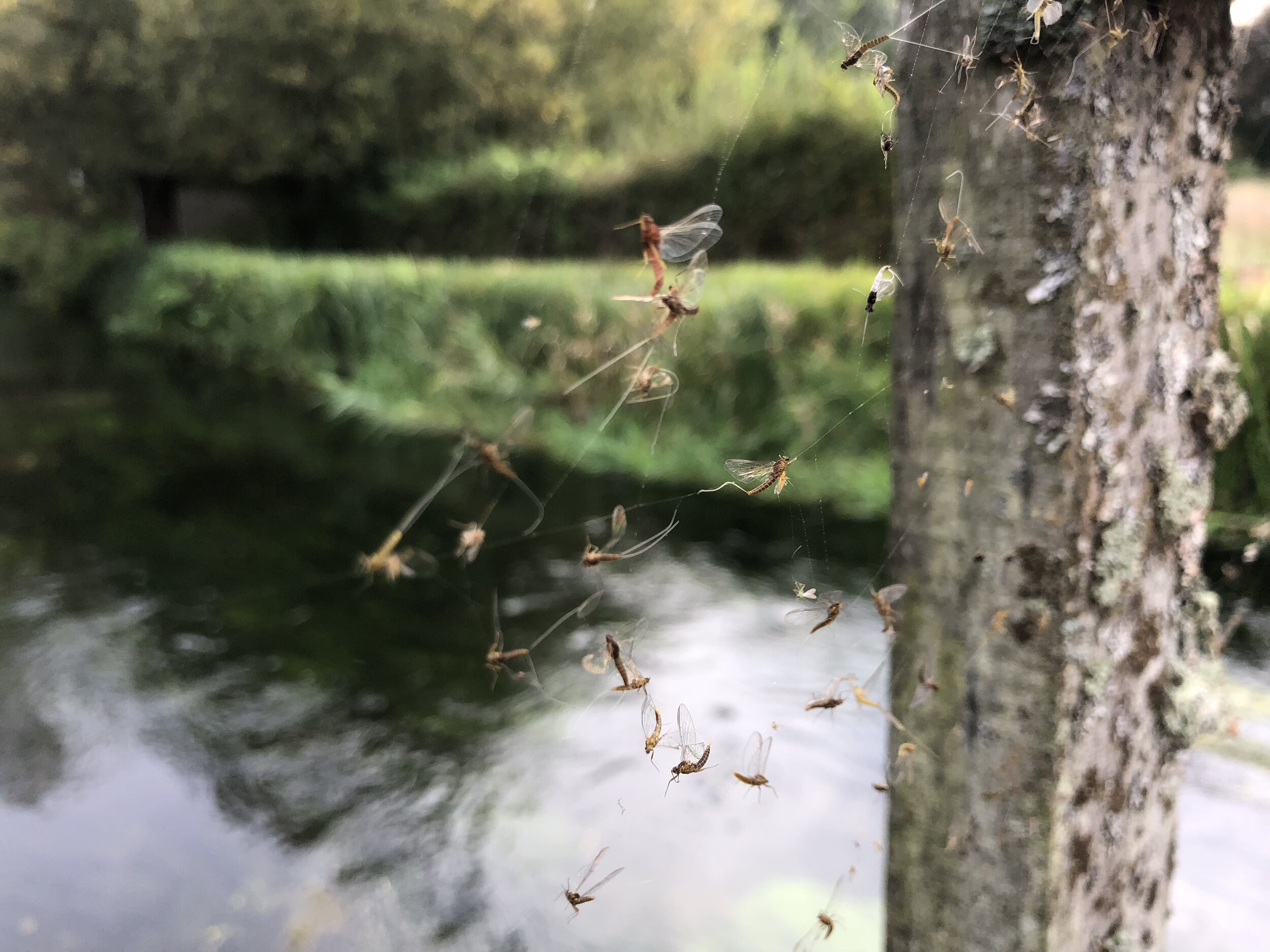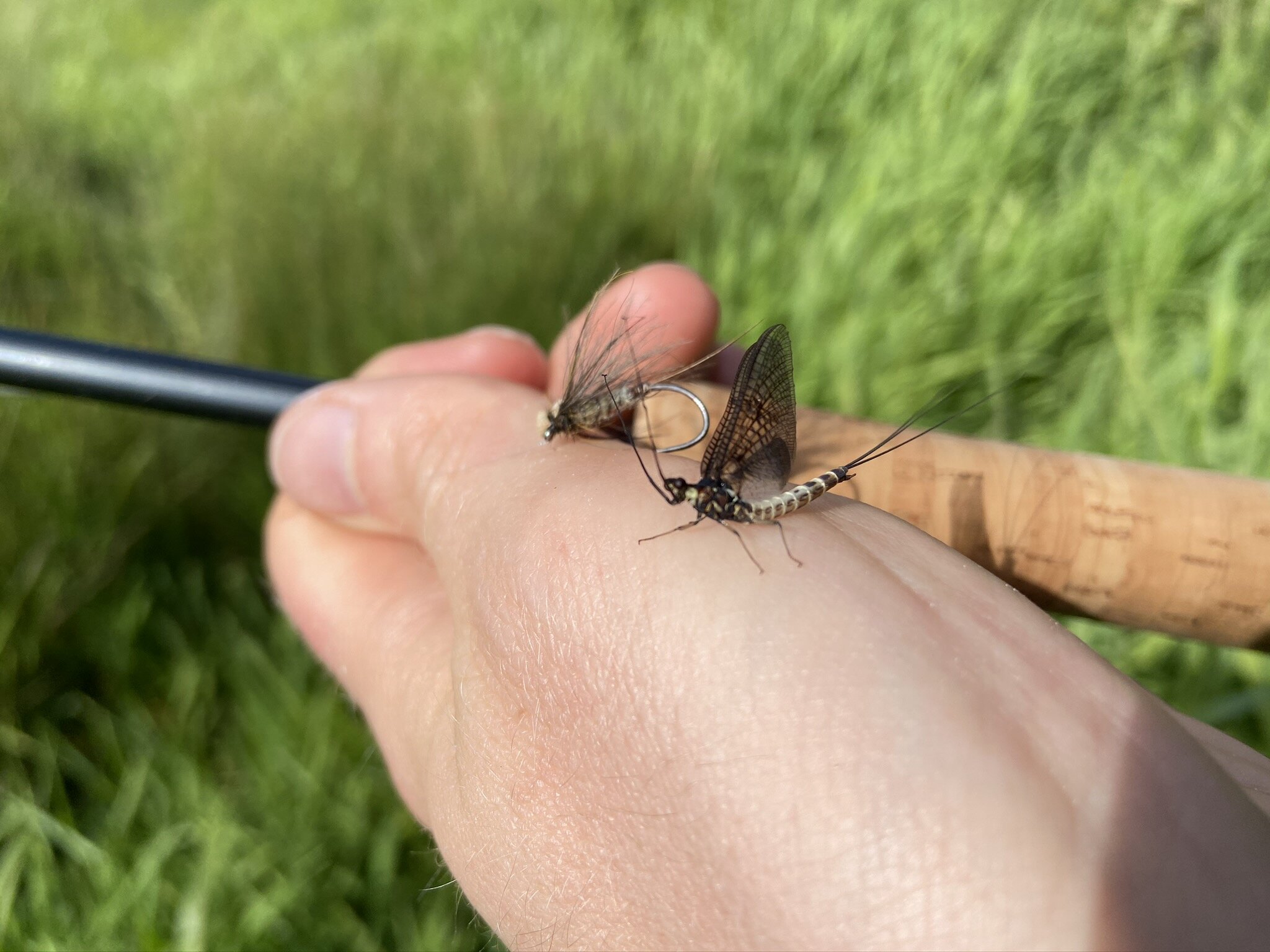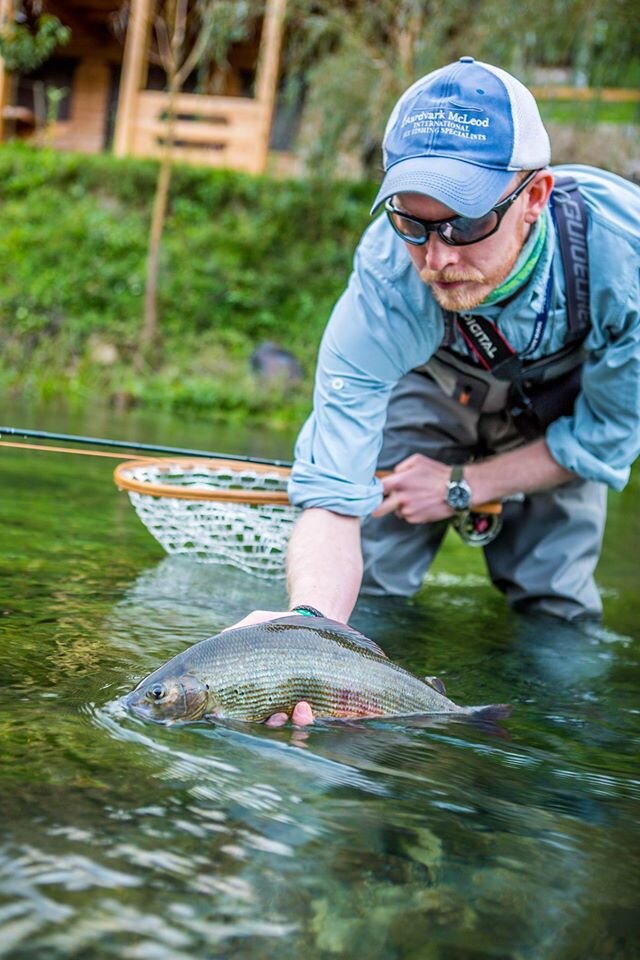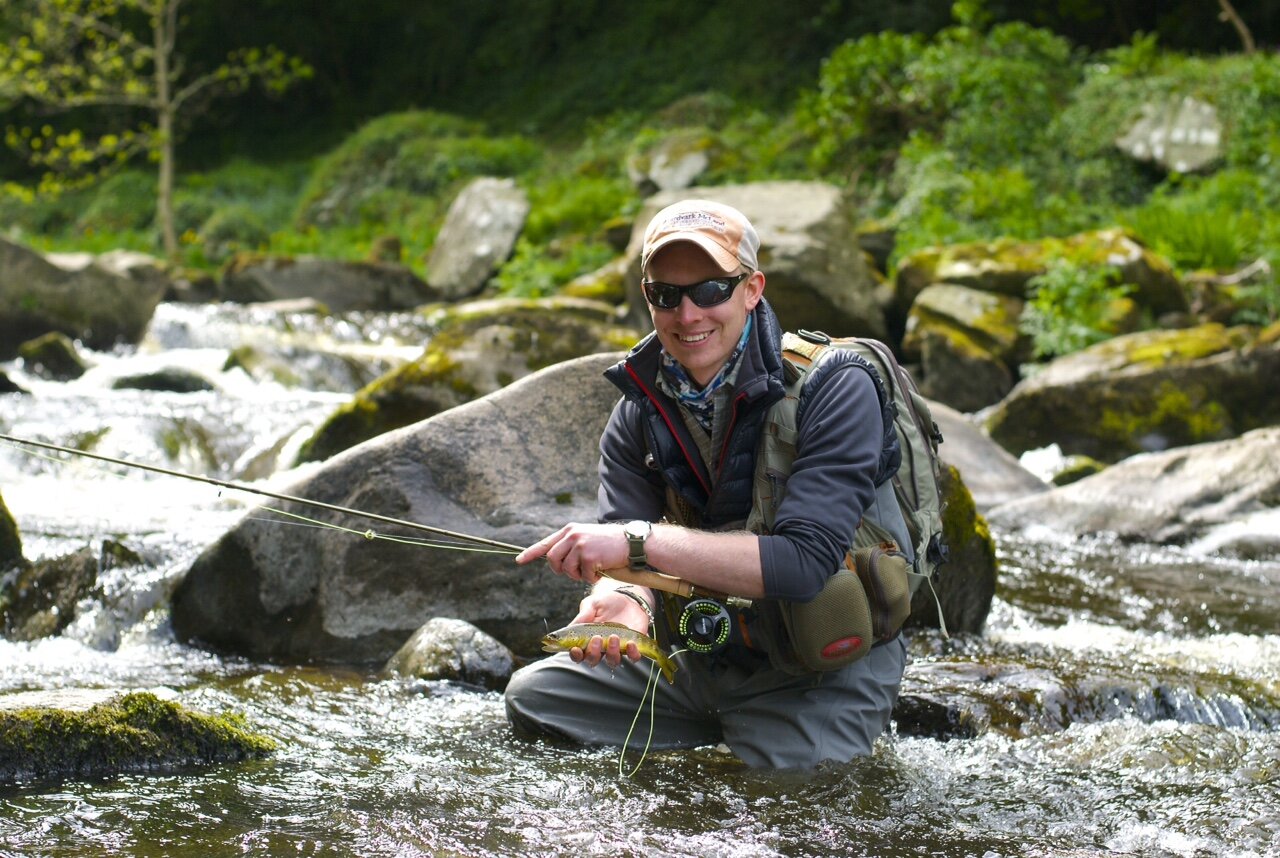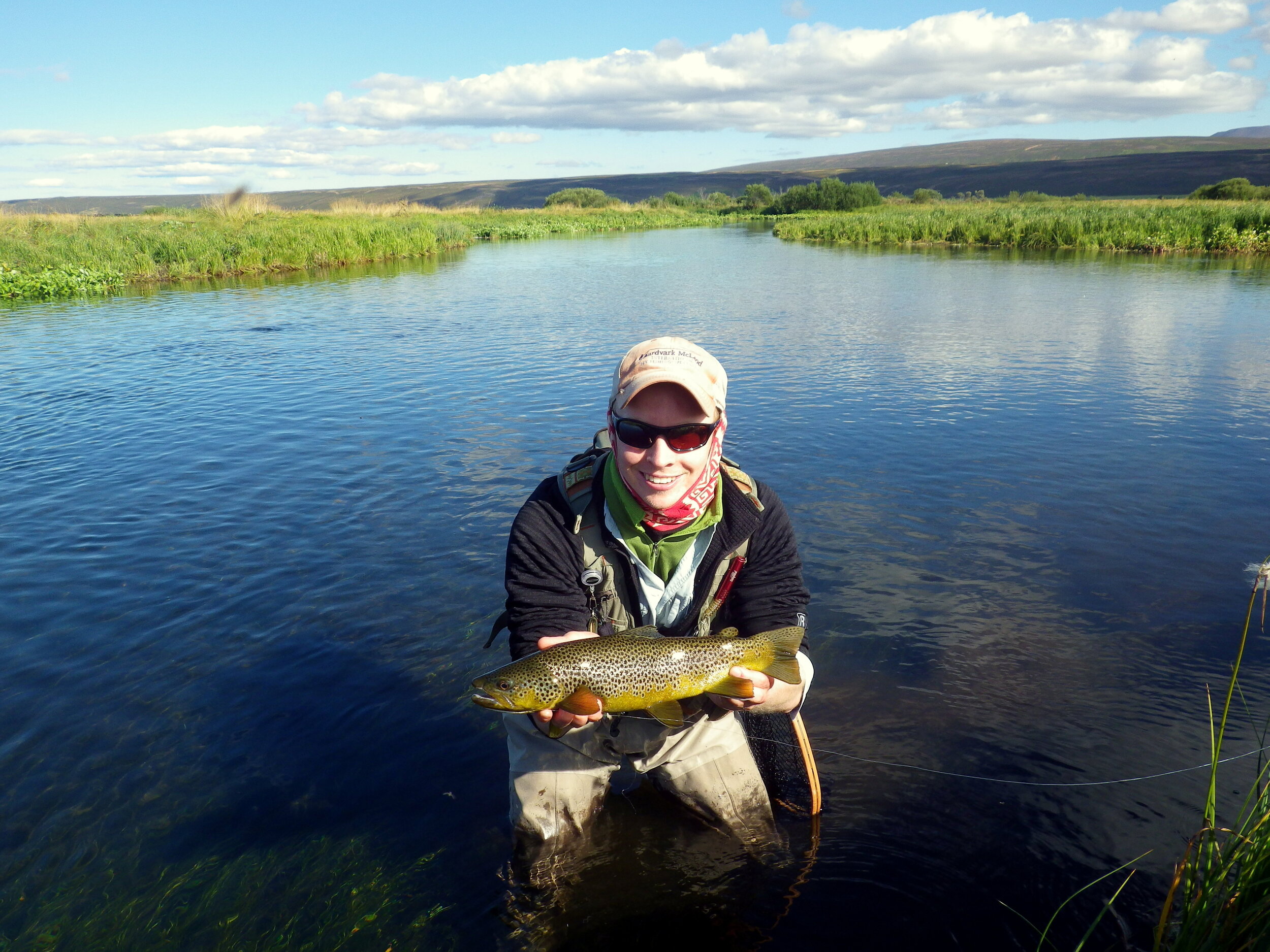
Alex Jardine
1. Choice of equipment Rods, reels, fly lines, fly floatants, clothes, glasses and other useful items.
Rod – this is often dependent on the size of the river, and the fish likely to be encountered but on my home water in England I like to use the Guideline Fario CRS 9’ #4. With the improvements in carbon technology it is possible to make delicate dry fly rods that are also fast enough to produce tight loops when fishing in windy conditions.
Reels – should match the rod so it balances in the hand, I use lightweight large arbour models so that I can store the line without creating too much line-memory.
Fly Line – I match my rod with a short belly tapered floating line, these aggressive weight forward lines allow for short and medium length casts to be made quickly and accurately.
Floatants – for CDC flies I use the Hunts Original brush on powder floatant to protect the delicate profile. On foam, deer hair and artificial fibre dries I use Tiemco Dry Magic as it offers great buoyancy.
Clothes – should be drab in colour to help you blend into your surroundings.
Glasses – this is one of my most important tools, I live in my Costa sunglasses, silver mirror for day times and yellow mirror for rainy days and evenings.
Other items – Amadou! Dry fly anglers should not leave home without an Amadou patch for drying their flies.
2. Leader material, build up, length and knots.
Leaders depend mainly on the venue and the fish you are targeting, you should always use the strongest and most accurate leader you can get away with whilst not lessening your chances of a hookup.
I have three main setups I use:
General dryly – for this I use a 5 foot furled leader with an additional tippet of 4 to 5 feet of copolymer added on. This is generally 5X (approx. 3 lbs) but is varied up or down depending on fly size, fish size and river size.
Big dry flies – For this I use a manufactured tapered copolymer leader. 9 feet in length and generally finish with a 5 to 3X (5 to 8 lbs) tip. I then tie the fly straight to the point.
Low water/ spooky fish – For this I build a much longer leader, starting with a 12 or 15 foot tapered copolymer leader. To this I will add a further 3 to 4 foot section of Fluorocarbon tippet often in 7 to 6X (2 to 3 lbs).
Knots should always be the ones that you have most confidence in, for me that is the Uni-Knot or Blood Knot.
3. Approach and stealth.
Always approach a river with the knowledge that you are approaching a spooky wild animal. You wouldn’t walk up to a deer in the wild and wonder why it runs away, so do not do the same with trout!
Use the bankside vegetation and river backdrop to mask your prescence and stop you from breaking the horizon with your silhouette. Where this is not possible, try and position yourself immediately downstream of your chosen trout.
4. Reading the water.
The easiest way is to find fish in clear water or those that are already rising, but when that is not the case then you need to identify feeding lines. These do vary depending on time of year, conditions and fly hatches, but the prime one is where fast and slow currents meet on a river. You can identify these by a ‘seam’ forming on the surface, or an area where surface debris and/or foam collects.
5. Casting ability which casts are essential.
As your casting improves as will your dry fly fishing, presentation is key. Some flies should land delicately, others need to splash onto the water.
The best addition to a cast when fishing is learning how to add in mends and tucks mid cast so your fly lands correctly from the start.
6. Entomology, what should we know.
Honestly, you need to know as much entomology as the trout do… by this I mean, you do not need to know the genus, family, latin name or anything else. You simply need to know the size, the colour, a rough idea on how they hatch and how they sit on or in the surface film. A great way to understand this is to simply look in spider’s webs next to the river.
7. Rise forms Can they tell us something?
Rise forms are the trout’s signature, they tell you everything. And there are many different forms, but to over simply it you can select 3 main forms:
The Splash – this is when a fish jumps clean out of the water or sends a spray of water up. This can be caused by one of two things. Firstly it can actually be a subsurface eat, when a trout eats a nymph swimming up to hatch or a caddis pupa swimming across the river. It can also be when a fly is fluttering above the water or struggling to fly away and is dapping on the surface.
The Head & Tail – this is when a fish porpoises like a dolphin on the surface. They do this when taking flies in the surface film (not on it). Emerging flies, spent adults and midges can get stuck in the surface film and trout know they have time so they rise slowly and roll through the surface.
Nebbing – this is when all you see of the trout is the nose. These are feeding on flies on the surface, adult upwings, midges, terrestrials, and anything that is floating.
8. Fly selection, size, shape, materials, which flies are essential, favourite fly.
This is purely dictated to by what is hatching, look in your spider’s web for advice. By watching the river and the fish rising you will learn your own favourites, sizes, shapes and colours.
There is no one fly, or one selection that is perfect. Materials vary depending on the river, CDC is fantastic for grayling and flat surfaced rivers, foam is great for fast rivers with trout but these are not rules but purely observations.
9. Presentation and drifts.
A ‘dead-drift’ is key, where the fly is not dragging across currents. And when I say key, I of course mean until it is the opposite of what you need.
As a general rule of thumb:
Midges and Mayflies – fish them dead drift
Caddis – skated across the surface
10. Upstream or downstream?
Both, where rules allow. And across stream. Fishing across the flow can offer good drifts, mask the leader from the sight of the trout and offer and more direct connection when striking.
Upstream would be second best as there is a better hookup rate but the fish are more likely to see the leader and may refuse the fly.
Downstream can be the hardest technique to master but can offer the perfect leaderless presentation.
11. fighting fish.
Should be down swiftly and with the trout’s interests and well-being held above all else. Make sure you maintain contact with the fish at all times, and play them as strongly as your leader and rod will allow.
Fishing with barbless hooks means that should you accidently break off on a trout they should be able to ‘thro’ the hook fairly quickly afterwards.
